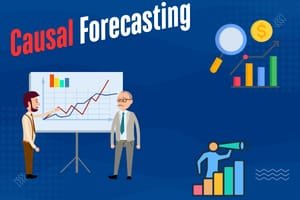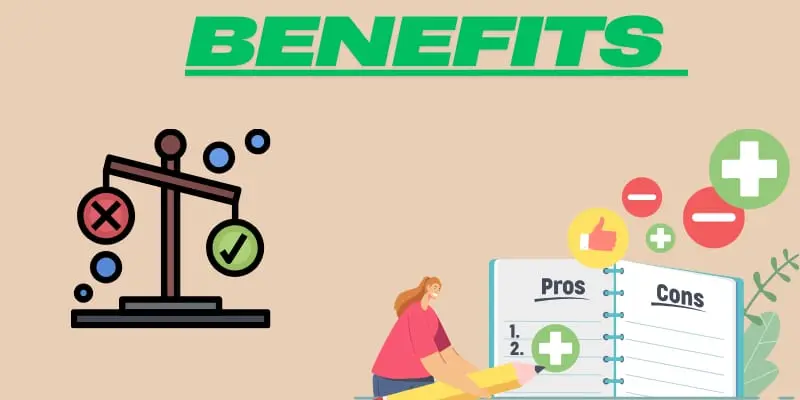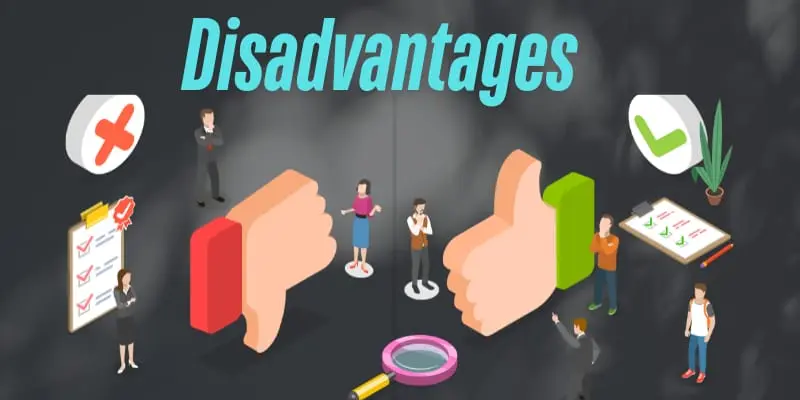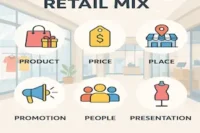Causal Forecasting – How to Implement + Key Risks & Advantages.
Published: 10 Mar 2025
Causal forecasting in retail is a data-driven method that predicts future sales by analyzing cause-and-effect relationships.
Right-causal forecasting ensures your stores are always full of the right products at the right time.
However, the wrong forecasting can even go bad, but guys, you need to worry about it from today.
This is because here I shared a detailed guide on what is causal forecasting in retail, how it works, its pros and cons, and, most importantly, how to implement it.
What Is Causal Forecasting?

Causal forecasting in retail is a data-driven method that predicts future sales by analyzing the cause-and-effect relationships between external factors and business outcomes.
Instead of relying only on past sales trends as traditional methods do, it considers variables like pricing changes, promotions, economic conditions, and even weather patterns to provide more accurate and actionable insights.
For example, a retailer might use it to determine how a holiday sale will impact demand or how a competitor’s pricing strategy could affect their sales.
This approach helps retailers in different ways such as it can help make smarter decisions, optimize inventory, and stay ahead in a competitive market.
Why is causal forecasting important?

The causal forecasting method offers a lot of benefits.
For example,
- It provides more accurate predictions by considering real-world factors that influence demand.
- Helps retailers understand the impact of pricing changes, promotions, and marketing campaigns.
- Enables better inventory management, reducing overstocking and stockouts.
- Supports strategic decision-making by quantifying the effects of external factors like weather or economic shifts.
- Improves customer satisfaction by ensuring popular products are always available.
- Reduces costs by optimizing stock levels and minimizing waste, especially for perishable goods.
- Offers a competitive edge by anticipating market changes and staying ahead of trends.
- Works well for new products or markets where historical data is limited.
- Enhances adaptability in dynamic and unpredictable retail environments.
Implementation and Best Practices for Causal Forecasting
Causal forecasting is a powerful tool for retailers, but its success depends on how well it’s implemented.
Here are five practical steps to get it right:
- Build a Strong Data Foundation: Start by gathering data from all relevant sources—sales records, customer behavior, marketing campaigns, and external factors like weather or economic trends. The more complete your data, the more accurate your forecasts will be.
- Use the Right Tools: Invest in advanced analytics tools or platforms that can handle complex data and uncover hidden patterns. Machine learning and predictive modeling can help you identify cause-and-effect relationships and make smarter predictions.
- Collaborate Across Teams: Causal forecasting works best when everyone is involved. Bring together sales, marketing, and supply chain teams to share insights and align strategies. This ensures your forecasts are actionable and aligned with business goals.
- Start Small, Then Scale: Begin with a pilot project, like forecasting demand for a specific product or during a promotion. Test your model, learn from the results, and refine it before expanding to other areas of your business.
- Monitor, Learn, and Improve: Regularly update your models with new data and adjust them to reflect changing market conditions. Treat mistakes as learning opportunities, and continuously refine your approach to keep your forecasts accurate and reliable.
By following these steps, you’ll not only implement causal forecasting effectively but also turn it into a strategic advantage for your retail business.
It’s all about understanding the “why” behind your sales and using that knowledge to make smarter decisions.
Overcoming Challenges During Forecasting.
Every store faces different challenges during causal forecasting.
For example, retailers often struggle with inaccurate or incomplete data, difficulty identifying which factors truly impact sales, unpredictable external events like economic shifts, and limited resources for advanced tools.
They sometimes even over-rely on historical data without incorporating real-time insights which leads them to heavy losses or overstocking.
Here are some steps to avoid these.
- Use advanced analytics to identify and prioritize the most influential variables affecting sales.
- Invest in affordable, scalable forecasting tools tailored to your business size and needs.
- Combine historical data with real-time insights to create a balanced and dynamic forecasting approach.
- Train your team on the latest forecasting techniques and tools to improve efficiency and accuracy.
- Partner with external experts or consultants to fill gaps in expertise or resources.
- Regularly review and update your forecasting models to reflect current market conditions and trends.
- Leverage cloud-based platforms for seamless data integration across online and offline channels.
- Monitor key performance indicators (KPIs) to quickly identify and address forecasting errors.
What are the Disadvantages of Causal Forecasting?

As guys, we know nothing is perfect in this world, right?
Meanwhile, causal forecasting also has some cons including.
- It requires detailed data which can be time-consuming to collect.
- Complex to implement, often needing advanced statistical or machine learning expertise.
- It relies on the accurate identification of causal relationships, which can be challenging in dynamic markets.
- External factors (e.g., economic changes and competitors’ new actions) can be unpredictable, affecting forecast accuracy.
- May not perform well for new products or markets with limited historical data.
- Less effective for short-term forecasts compared to simpler methods like time-series analysis.
- Requires continuous updates and adjustments to remain relevant in changing conditions.
Causal Forecasting vs. Traditional Forecasting Methods.
When it comes to predicting future sales and demand, retailers often rely on forecasting methods.
However, not all methods are the same. Let’s compare causal forecasting and traditional forecasting to understand their key differences and applications.
Traditional Forecasting
Traditional methods, like time-series analysis, use historical sales data to predict future trends.
They focus on what happened in the past, assuming those patterns will continue.
For example, a retailer might use last year’s holiday sales to estimate this year’s demand.
While simple and effective for stable markets, traditional methods struggle with unexpected changes, like
- Economic shifts or
- New product launches,
because they ignore external factors.
Causal Forecasting
Causal forecasting takes a deeper approach by analyzing why sales happen.
It looks at cause-and-effect relationships between external factors—like
- Pricing changes,
- Promotions or
- Weather—and sales outcomes.
For instance, a retailer might use causal forecasting to predict how a 10% discount will impact sales during a holiday season.
This method is more accurate in dynamic environments and helps retailers make data-driven decisions.
Here are some key points on the differences between traditional forecasting methods and causal forecasting methods.
- Data Used: Traditional methods rely on historical data; causal methods add external factors like pricing changes, marketing campaigns, economic conditions (e.g., inflation, unemployment), and competitor actions.
- Focus: The traditional method asks what happened; the causal asks why it happened.
- Accuracy: Causal forecasting is better for changing markets. And for stable markets, traditional methods are good enough.
Hey! My Dears.
So it’s time to say goodbye. Today we’ve explored what is causal forecasting in detail, uncovering how it helps retailers predict demand by analyzing cause-and-effect relationships.
From understanding its importance to tackling common challenges, we’ve seen how this method can transform decision-making and boost profitability.
Whether you have a small business or a large retail store, embracing causal forecasting can help you stay ahead in a competitive market.
Thank you for joining me on this journey, and I hope you’re now equipped with the knowledge to take your retail strategies to the next level.
Until next time, happy forecasting!
FAQs About Causal Forecasting.
These are some frequently asked questions about causal forecasting.
Causal forecasting focuses on identifying and analyzing cause-and-effect relationships between variables (e.g., marketing spending, pricing, or economic trends) and sales. Traditional forecasting, on the other hand, relies heavily on historical data and trends. While traditional methods are simpler, causal forecasting provides deeper insights into why sales fluctuate, making it more accurate for dynamic markets.
Yes, small businesses can use causal forecasting, but they may need to start with simpler models due to limited resources. By focusing on a few key variables (e.g., promotions or seasonal trends) and using affordable tools, small retailers can still benefit from this approach. As the business grows, they can invest in more advanced systems and expand their forecasting capabilities.
Popular tools for causal forecasting include advanced analytics platforms like Tableau and Power BI and specialized retail forecasting software such as SAP Forecasting and Replenishment or Oracle Retail Predictive Application Server. These tools help retailers analyze data, identify key variables, and generate accurate forecasts. Choosing the right tool depends on your business size, budget, and specific needs.
Retailers should update their causal forecasting models regularly, ideally monthly or quarterly, to reflect changing market conditions, new data, and emerging trends. However, during periods of significant disruption (e.g., economic shifts or seasonal peaks), more frequent updates may be necessary to maintain accuracy and responsiveness.
While causal forecasting is powerful, relying solely on it can be risky if key variables are overlooked or if the model isn’t updated regularly. External factors like sudden market disruptions or inaccurate data inputs can lead to flawed predictions. To mitigate risks, combine causal forecasting with other methods, such as qualitative insights or scenario analysis, for a more balanced approach.

- Be Respectful
- Stay Relevant
- Stay Positive
- True Feedback
- Encourage Discussion
- Avoid Spamming
- No Fake News
- Don't Copy-Paste
- No Personal Attacks



- Be Respectful
- Stay Relevant
- Stay Positive
- True Feedback
- Encourage Discussion
- Avoid Spamming
- No Fake News
- Don't Copy-Paste
- No Personal Attacks





